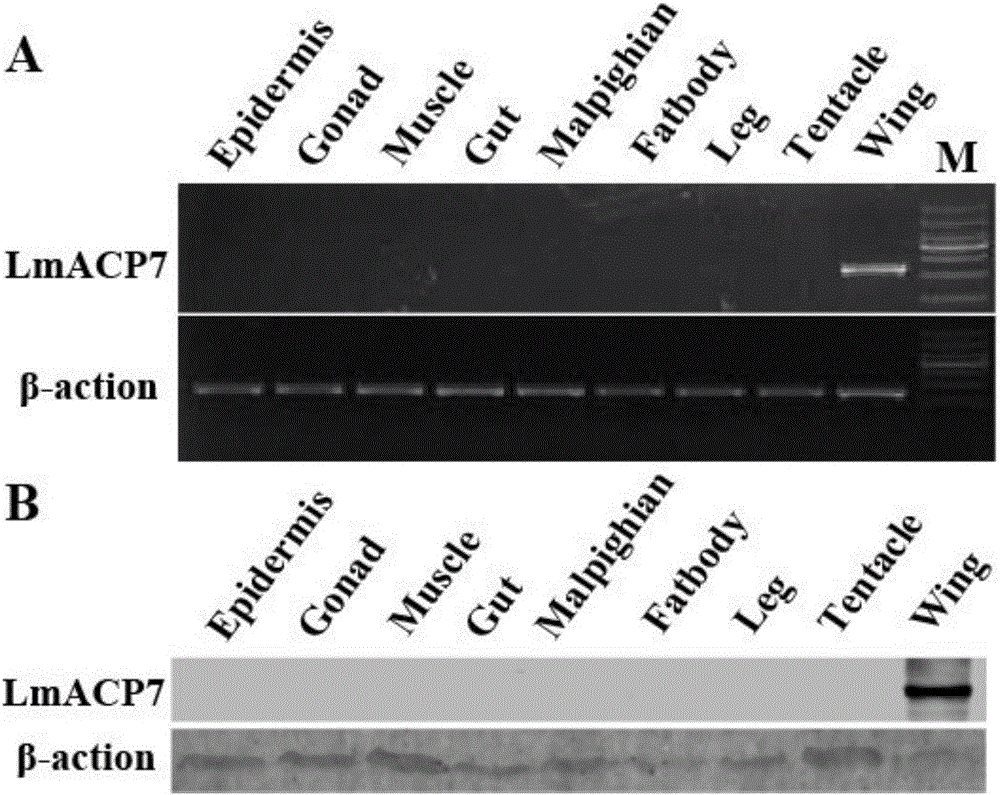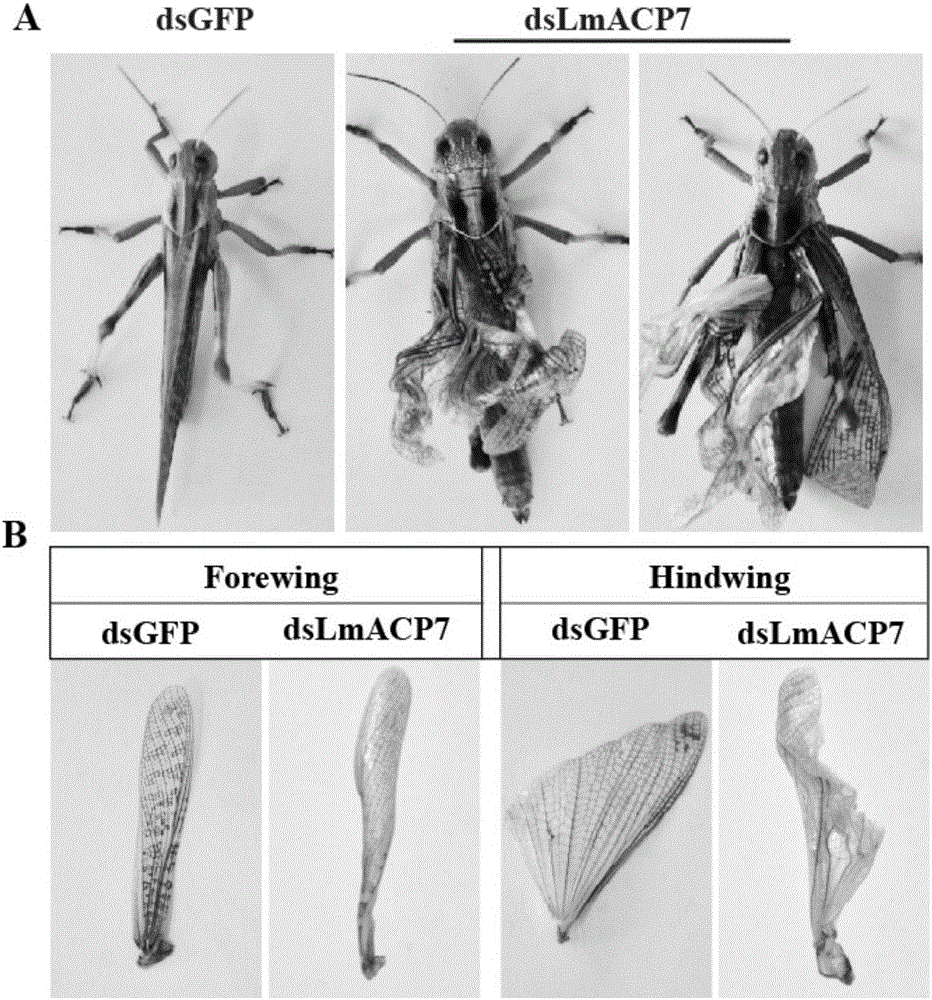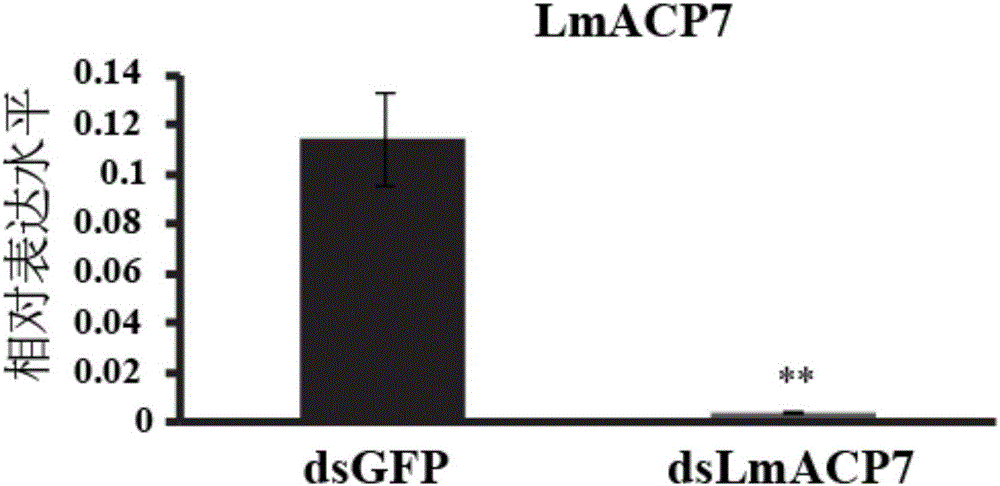Migratory locust wing specific cuticle protein gene and application of dsRNA thereof
A kind of epidermal protein and specific technology, applied in DNA/RNA fragments, applications, genetic engineering, etc., can solve problems such as pesticide residues, serious environmental pollution, and harm to human health
- Summary
- Abstract
- Description
- Claims
- Application Information
AI Technical Summary
Problems solved by technology
Method used
Image
Examples
Embodiment 1
[0012] Example 1: The sequence, tissue expression and dsRNA acquisition of migratory locust wing epidermal protein gene
[0013] 1. Obtaining the sequence of the wing epidermal protein gene of migratory locust and its tissue expression analysis
[0014] 1) Search for the sequence of the migratory locust wing epidermal protein gene in the migratory locust transcriptome database
[0015] Based on the migratory locust transcriptome database, the sequence of the migratory locust wing epidermal protein gene was searched using bioinformatics methods. After sequence analysis and comparison, the sequence fragments of the migratory locust wing epidermal protein gene were obtained.
[0016] 2) Acquisition of the full-length cDNA sequence of the wing epidermal protein gene of migratory locust
[0017] Based on the obtained locust wing epidermal protein gene sequence, 5' RACE primers were designed using primer premier 5.0 software. All primers were synthesized by Sangon Bioengineering (...
Embodiment 2
[0025] Example 2: Migratory locust wing-specific epidermal protein gene dsRNA causes abnormal wing development of adults
[0026] 1. Injection of locust wing-specific epidermal protein gene dsRNA
[0027] 5 μl (10 μg) of dsRNA of SEQ ID NO: 2 was injected with a 25 μl micro-syringe between the second and third abdominal segments of the 2nd-day-old nymphs of the 5th instar migratory locust, and a total of 60 were injected, half male and half male. Inject dsGFP at the same volume concentration into the control group. The injected migratory locusts were raised in a constant temperature biochemical incubator at 30°C.
[0028] 2. Observation of the phenotype of migratory locust wing tissue after dsRNA injection
[0029] After the 5th instar nymphs were injected with dsRNA, 6 days after the injection of dsGFP the control group began to molt and all of them successfully molted to adults. After molting to adults, the nymphs were normal in shape and vitality, and began to eat normall...
PUM
 Login to View More
Login to View More Abstract
Description
Claims
Application Information
 Login to View More
Login to View More - R&D
- Intellectual Property
- Life Sciences
- Materials
- Tech Scout
- Unparalleled Data Quality
- Higher Quality Content
- 60% Fewer Hallucinations
Browse by: Latest US Patents, China's latest patents, Technical Efficacy Thesaurus, Application Domain, Technology Topic, Popular Technical Reports.
© 2025 PatSnap. All rights reserved.Legal|Privacy policy|Modern Slavery Act Transparency Statement|Sitemap|About US| Contact US: help@patsnap.com



